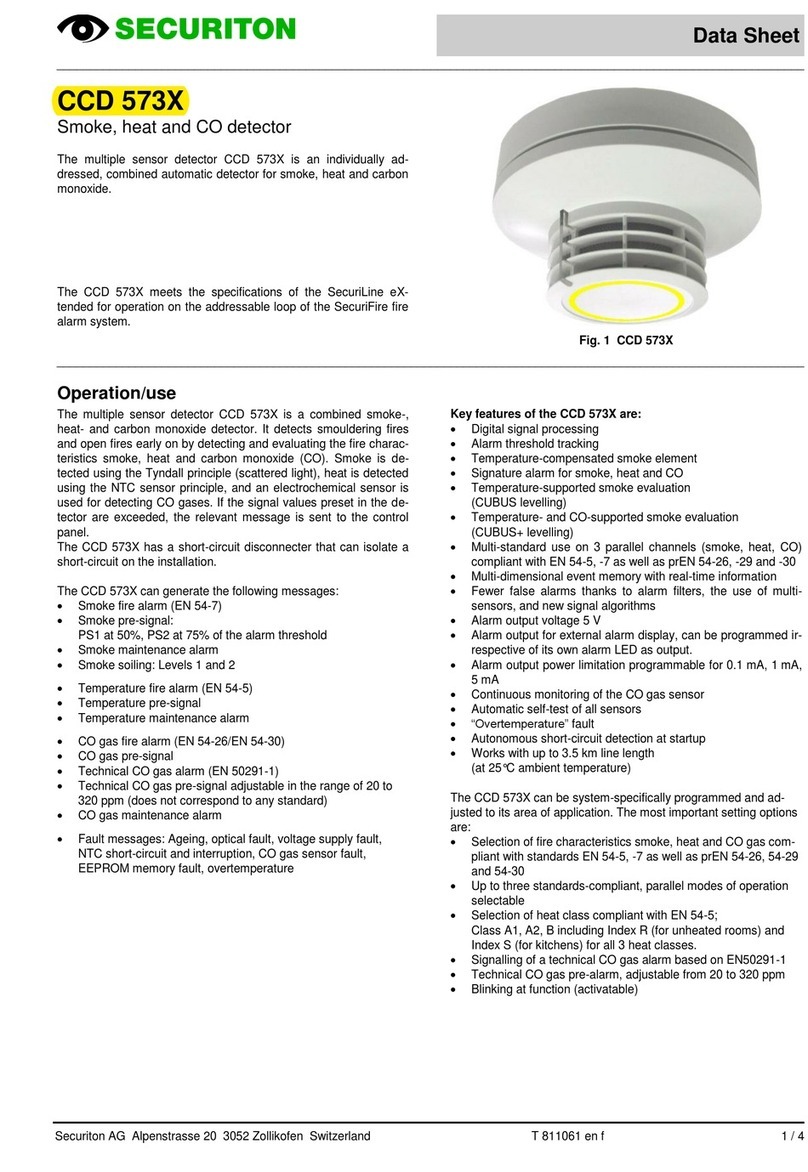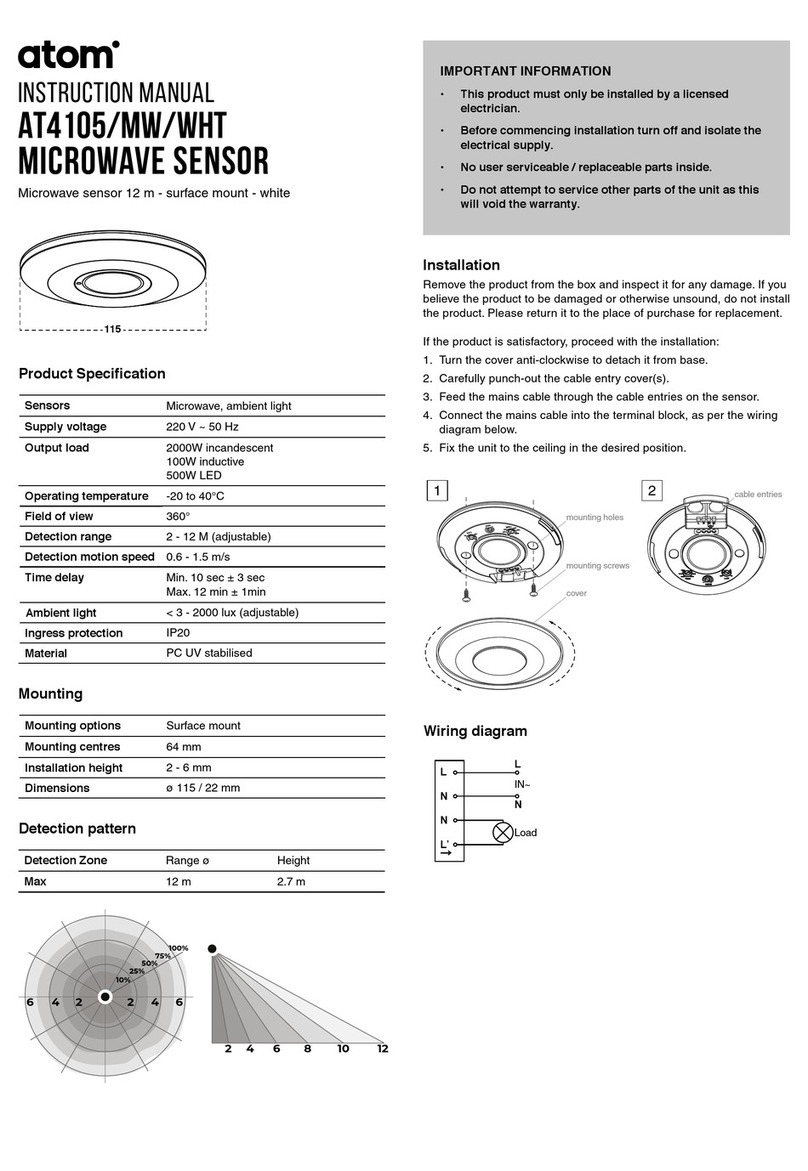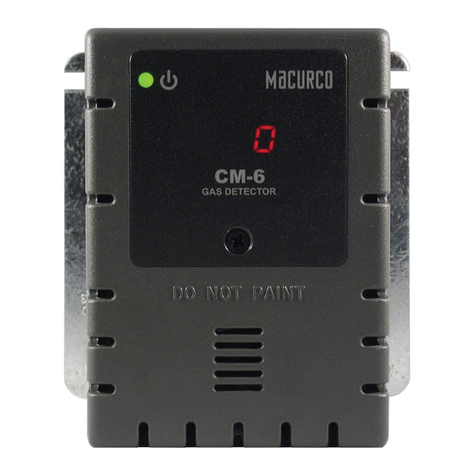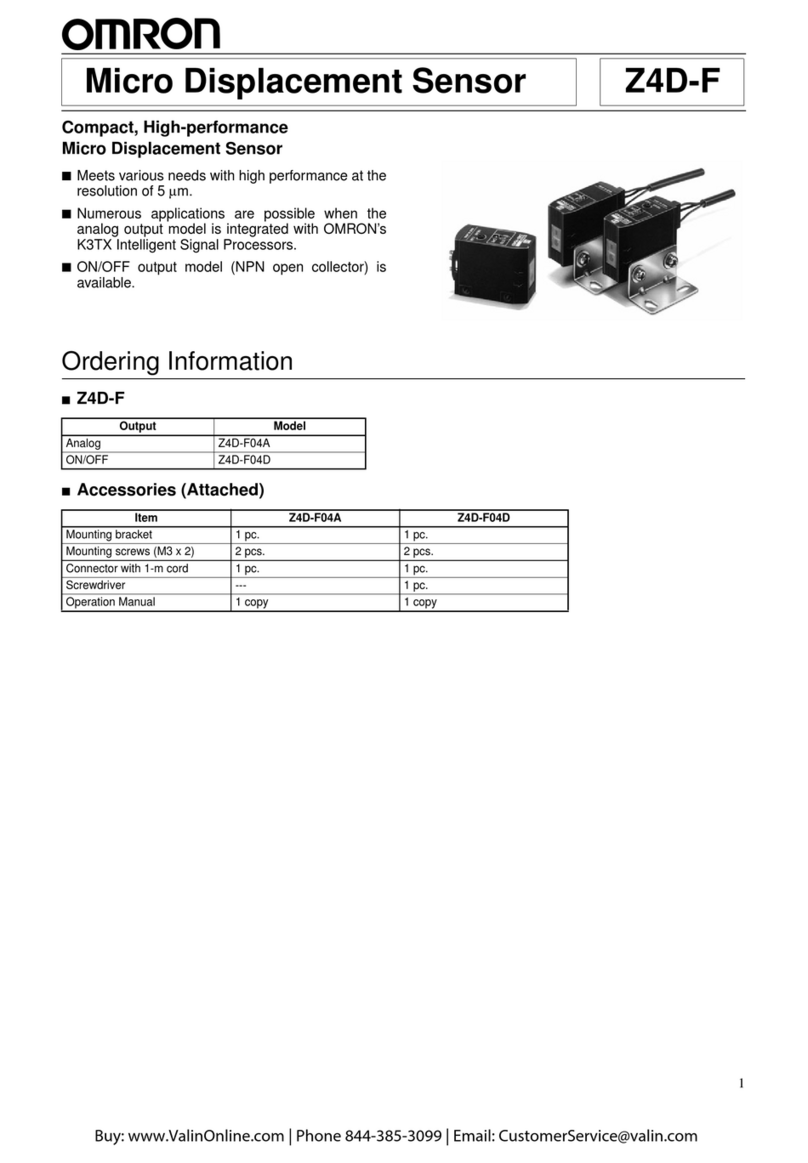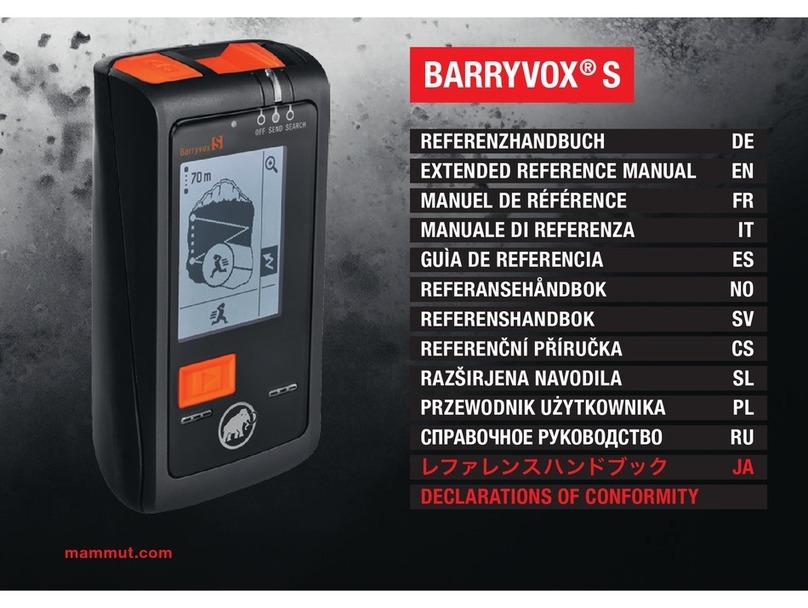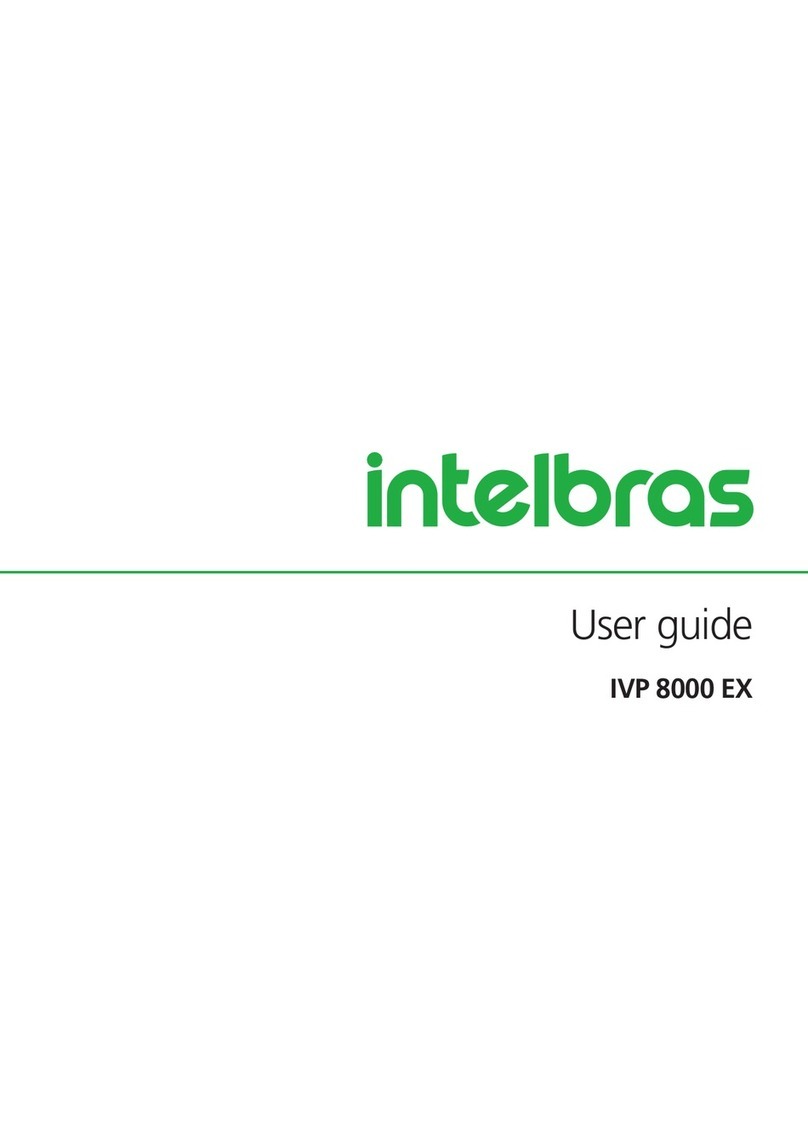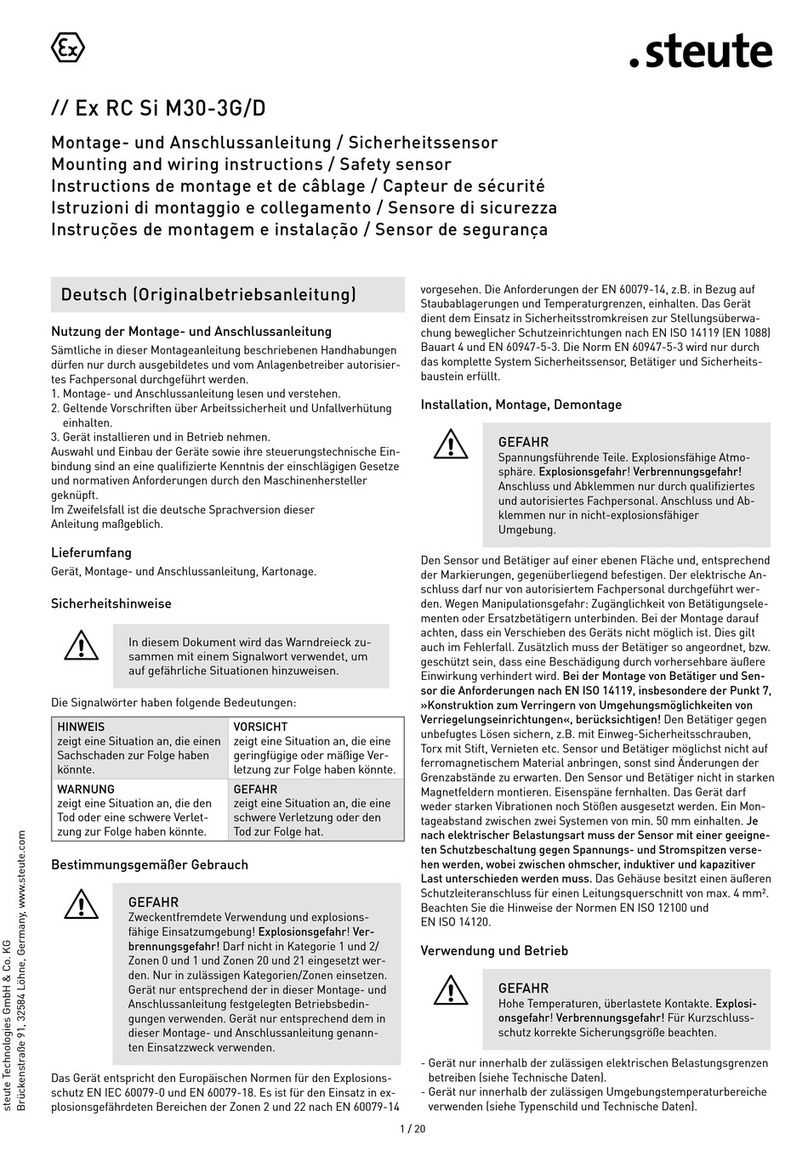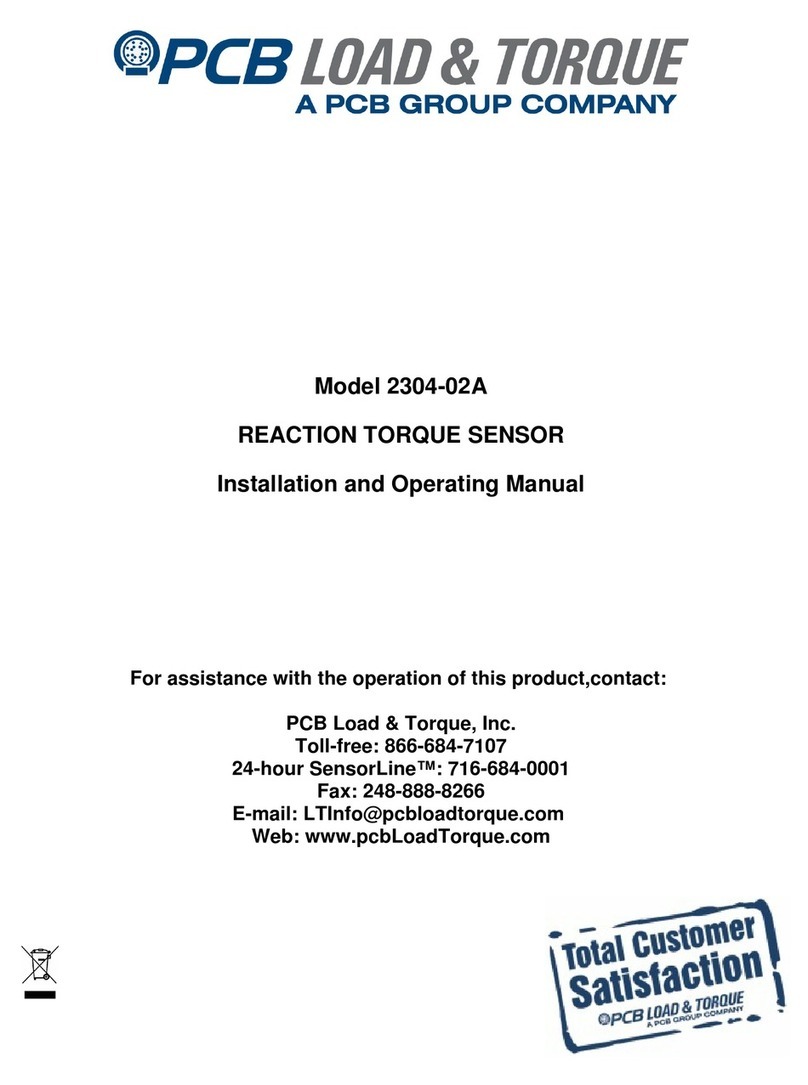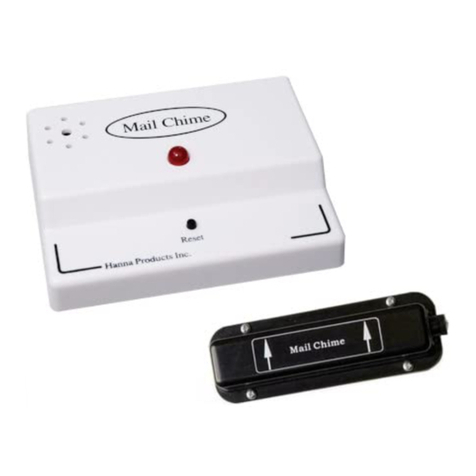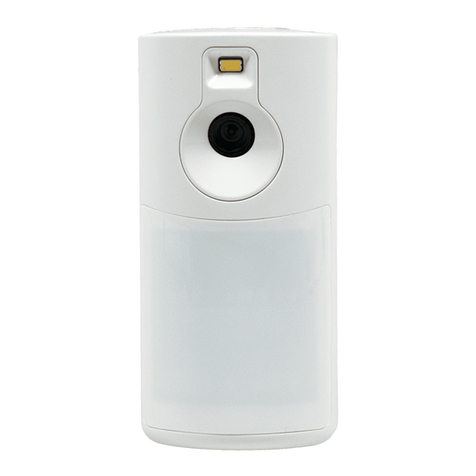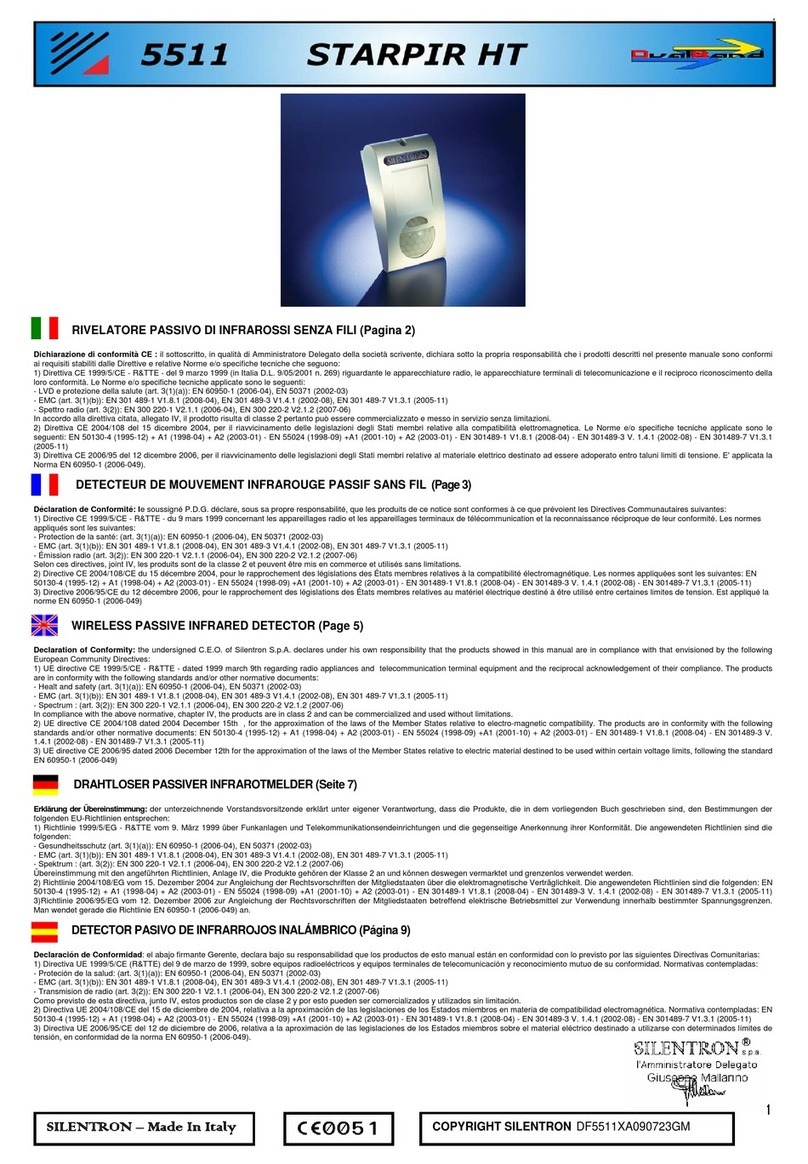Skinner Innovations HST Series User manual

Skinner Innovations LLC 708 N. Douglas St. Lake City, IA 51449 (801) 766 4782 www.skinnerinnovations.com
HST Series Heat Detector Tester
For Rate Compensated Fire Detectors
and Thermal Switches
HST Series
Operation Manual
www.skinnerinnovations.com email: [email protected]
Rev 11-24-2017

Skinner Innovations LLC 708 N. Douglas St. Lake City, IA 51449 (801) 766 4782 www.skinnerinnovations.com
Page | 1
HST Series Heat Detector Tester
For Rate Compensated Fire Detectors
and Thermal Switches
Contents
1. Table of Contents
2. Model number configuration guide
3. Specifications
4. Safety warnings
5. Assembly
6. Operation
7. Remote Temperature Output
8. Troubleshooting
9. Service
10. Product Warranty
11. Appendix A - Technical Note: Rate Compensated Heat Detector Testing
12-13. Appendix B – Operation Supplement: Rate Control option / rate compensation verification
14. Appendix C- Operation Supplement: Testing Fenwal® 17343 series detectors
15. HST Output Cable
16-17. HST Output Extension Cable
18-19. HST Power Supply
20-21. HST Power Extension Cable
Attention:
This manual should be read by all who will be using or maintaining this product. Information herein is
subject to change without notice. Testing procedures, tolerances, and pass/fail criteria are the
responsibility of the end user. Information in this manual is for informational purposes only.
This product is not field repairable due to the meticulous alignment and calibration of the device.
Do not attempt to repair or modify. Doing so will impair the devices performance and void the Skinner
Innovations LLC Product Warranty
This product is protected under patent numbers GB2468393 / U.S. Pat. No. 8,454,228

Skinner Innovations LLC 708 N. Douglas St. Lake City, IA 51449 (801) 766 4782 www.skinnerinnovations.com
Page | 2
HST Series Heat Detector Tester
For Rate Compensated Fire Detectors
and Thermal Switches
Mode l number configuration guide
HST- #- ### -#
Sensor size:Set points (degrees Fahrenheit): Options:
A= 5/8”*** (Fenwal® /DAF) ALO=140, 160, 190, 210, 225 C=rate controlled* **
B=17/32” (Thermotech) MEL*=160, 190, 210, 225, 275
C= 16mm (Olsen / Tyco) MEH*=190, 210, 225. 275, 325
D=20mm* ALM=225, 275, 325, 360, Cool down
E=18mm* AME=275, 325, 360, 450, Cool down
P=23mm*(Pastor) AMH*=325, 360, 450, 500, Cool down
AHI=450, 500, 600, 725, Cool down
BLO=135, 194 (2 temperature for Thermotech detectors)
*contact for availability
**temperature rate control "Rate Compensation Verification"(see Appendix A&B for details)
***models shown are for Fenwal® DETECT-A-FIRE® model 27127, 28021, 27120, and 28020
contact Skinner Innovations to confirm correct HST model to use with other sensors
Example model number: HST-A-ALO
HST tester- For use on 5/8” sensors, calibrated set points: 140,160,190,210, & 225°F, no options
For other temperatures, sizes, custom options, or custom temperature set points, consult
Skinner Innovations: email: info@skinnerinnovations.com
HST tester- shown with compatible poles and large carry bag (part number: HST-BAG-LRG)
Consult Skinner Innovations about where to obtain compatible poles

Skinner Innovations LLC 708 N. Douglas St. Lake City, IA 51449 (801) 766 4782 www.skinnerinnovations.com
Page | 3
HST Series Heat Detector Tester
For Rate Compensated Fire Detectors
and Thermal Switches
Specifications
HST test head:
•Aluminum housing
•1 to 5 temperature set points- factory set
•Large easy to see LED indicator light
•Heavy duty power switch
•Solid state temperature control unit
•Auto off timer feature (default setting=5 minutes from time set-point is reached)
•Remote temperature output- connection to directly read temperature with digital voltmeter
•CE Conformity
Battery:
•18vdc or 24vdc Li-Ion battery pack
•Capacity: 3000mAh
•CE Conformity
•Protective circuit installed within the battery pack protects product from:
- Over current
- Over-charging cut-off
- Over-discharge cut-off
- Short circuit and wrong polarity
•Charger: Only use charger supplied with the HST battery pack
•Battery Storage: for optimum performance, store battery at 60% charge, do not place a
discharged battery into storage, as the cell voltage may further drop below acceptable voltage
level and pack safety circuit will not allow re-charging
Battery charger:
•Intelligent charger designed for Li-Ion battery pack.
•UL CE Conformity
•Worldwide input- AC power from 100V-240V -50/60Hz.
•Charging time for battery pack is about 1.5 Hrs.
•Built in circuit to cut off power automatically when battery is fully charged.
•Red LED indicates battery charging and Green LED indicates battery fully charged

Skinner Innovations LLC 708 N. Douglas St. Lake City, IA 51449 (801) 766 4782 www.skinnerinnovations.com
Page | 4
HST Series Heat Detector Tester
For Rate Compensated Fire Detectors
and Thermal Switches
Safety Warnings
Do not use the HST test tool in any area where flammable gas is present.
The HST test tool is a heat producing device; keep away from skin, body parts, and flammable materials.
Do not leave unit unattended. Always wear safety glasses, appropriate gloves, and other personal
protective equipment when using the tool.
The HST utilizes Li-Ion batteries; refer to the battery and charger section of this manual before charging
or use. Do not make any changes to the charger, charger accessories or connectors, as this might cause
electrical short, fire or over-heating during charging.
Use special caution when working with Li-Ion cells, they are sensitive to charging
characteristics and should not be mishandled.
oNever leave a charging battery unattended
oDo not set battery or charger on wood, carpet, or any other flammable surface
oUse only charger supplied, do not alter charger or battery
oLi-Ion cells are sensitive to charging characteristics and can be dangerous if
mishandled
oRead and understand all instructions before use
When using pole-mounted tools overhead, ensure that poles are locked and secure. Consult Skinner
Innovations about where to obtain compatible poles.
Barricade areas around and below test areas so that persons not involved with testing will not enter the
work area where overhead testing is taking place.
Always inspect poles, batteries, battery case, and HST test head for damage prior to each use. If any
damage is noted during this check, remove from service immediately, and have the unit serviced.

Skinner Innovations LLC 708 N. Douglas St. Lake City, IA 51449 (801) 766 4782 www.skinnerinnovations.com
Page | 5
HST Series Heat Detector Tester
For Rate Compensated Fire Detectors
and Thermal Switches
Assembly
1. Thread the rubber straps though the loops on back side of cloth battery holder, leaving a loop in the
middle of each strap.
Battery holster- showing proper installation of rubber straps Holster with strap-loops around pole
2. Insert battery into the battery holder and secure the side release buckles.
3. Place holder over HST compatible pole with rubber straps looped around the pole
Holster with rubber strap fastened HST Series heat detector tester- installed on an HST compatible pole
4. Snug down rubber straps and ensure that straps are secure
5. Insert test head onto pole. Ensure that buttons are secure.
6. Plug cord into battery and twist lock ring to fasten connector in place

Skinner Innovations LLC 708 N. Douglas St. Lake City, IA 51449 (801) 766 4782 www.skinnerinnovations.com
Page | 6
HST Series Heat Detector Tester
For Rate Compensated Fire Detectors
and Thermal Switches
Operation (For operation with Rate Control option, see Appendix B)
1. Ensure bypasses are in place, including disabling of any fire suppression systems.
2. Ensure that HST is correct temperature range for detectors to be tested. If using multi-
temperature HST, ensure that correct temperature setting is selected.
3. Turn on HST by pressing the power button. The indicator light will turn on steady until temp
setting is reached.
4. Place tool over the sensor to be tested
5. Wait for sensor to trip. When the indicator light begins to cycle off and on, the tool has
reached its calibrated set point. (If light does not cycle and stays off for more than 30 seconds,
battery may require recharging) After a preset timeout period, indicator light will flash at a fast
rate and heating unit will turn off. To reset unit, press power button off and on again.
6. After HST has reached its set point temperature, the temperature will hold steady for 5
minutes.
7.Next the heat will turn off for 1 minute (detector should auto-reset during this off-time)
before heat is again turned on allowing user to verify the set point trip of the heat detector.
(For testing with Rate Control option, see Appendix B)
8. Heat is turned off for 1 minute then on again for 3 more cycles.
9. Repeat process for each device to be tested.
Note: If the HST is not cooled down between tests, the sensor to be tested will be heated at a
much faster rate. This faster rate of heating could cause the rate compensated fire detector to trip at a
temperature lower than the stated set point on the sensor. See Appendix A for more information.

Skinner Innovations LLC 708 N. Douglas St. Lake City, IA 51449 (801) 766 4782 www.skinnerinnovations.com
Page | 7
HST Series Heat Detector Tester
For Rate Compensated Fire Detectors
and Thermal Switches
Remote Temperature Output see appendix A
1. Connect HST to digital voltmeter using special connection cable
Requires 1.5 meter cable part number HST-A5-CBL (sold separately). For longer distance use
with 8.3 meter extension cable part number HST-EXT-CBL.
2. Read temperature directly from voltmeter.
Example: 0.325vdc = 325 degrees F
Notes on Remote Temp Output (also see appendix A):
1. If sensor trips lower than the manufacturer’s set point:
a.) Remember that some detectors are Rate Compensated. The actual trip point will vary
depending ambient temperature and the rate of temperature rise.
2. If sensor does not trip:
a.) Check sensor shell for damage. Small dings, dents, and overheating can shift the set point.
b.) Let sensor cool down, then place fully heated tester onto sensor
c.) If using multi-temperature tester, try turning up to next temp setting.

Skinner Innovations LLC 708 N. Douglas St. Lake City, IA 51449 (801) 766 4782 www.skinnerinnovations.com
Page | 8
HST Series Heat Detector Tester
For Rate Compensated Fire Detectors
and Thermal Switches
Troubleshooting
Problem
Possible cause
Remedy
Indicator light does not
turn on
If indicator light stays off for over
60 seconds, power may be off or
battery may require recharging
1. Push power button
2. Recharge battery
Indicator light on, unit
heating, but sensor is not
tripping
1. Sensor set point is higher than
the set point of the HST
2. Detector is damaged
3.HST tester model incorrect for
detector
Sensor/detector may be damaged
Visually check sensor for damage, including
signs of overheating.
1. Use tool with proper set point
2. Place fully heated tool onto ambient
temperature sensor. If sensor trips, its set
point may have shifted (a common result of
overheating or other damage)
3. Confirm HST model is matches detector
4. Try using the tester on a known working
sensor
Indicator light flashing at
2-blink rate Heater fault
1. Charge battery
2. Return for service
Indicator light flashing at
3-blink rate
Internal sensor has detected a
failure Return for service
Indicator light flashing at
4-blink rate
Over temperature alarm the
tester is above the selected set
point temp
(This will occur when changing
from a high temp setting to a
lower temp setting)
1. Allow unit to cool down to set point
temperature
2. Reset by pressing power button off and then
restarting
Indicator light flashing on
and off quickly Internal safety timer has timed out
Reset by pressing power button off and then
restarting

Skinner Innovations LLC 708 N. Douglas St. Lake City, IA 51449 (801) 766 4782 www.skinnerinnovations.com
Page | 9
HST Series Heat Detector Tester
For Rate Compensated Fire Detectors
and Thermal Switches
Service
For technical assistance or repair contact Skinner Innovations
Email:service@skinnerinnovations.com
Website: www.skinnerinnovations.com
Physical address
Skinner Innovations LLC
708 North Douglas Street
Lake City, Iowa 51449
Mailing address
Skinner Innovations LLC
PO BOX 97
Lake City, Iowa 51449
Phone: (801) 766- 4782
Along with a detailed description of the problem, please include:
1. The manufacturer, model number, and set point of the heat sensors you are testing.
2. The model and serial number of the HST
Periodic Service and maintenance:
1. Inspect the tool as described in this manual before each use.
2. Return tool to Skinner Innovations LLC for repair or calibration.
Call for return authorization prior to sending in any unit for service or repair.
3. Do not attempt to disassemble the tool. There are no user serviceable parts. Special care is
required for disassembly.

Skinner Innovations LLC 708 N. Douglas St. Lake City, IA 51449 (801) 766 4782 www.skinnerinnovations.com
Page | 10
HST Series Heat Detector Tester
For Rate Compensated Fire Detectors
and Thermal Switches
Product Warranty
To the original purchaser, for one year from date of purchase, Skinner Innovations
LLC will warranty repair or replace any damaged components that are determined
to be the result of manufacturer defect. Any unit that has been opened up,
disassembled, or otherwise worked on by anyone other than Skinner Innovations
LLC, will not be covered under this warranty. Normal wear and tear is not
covered. Scratches and other cosmetic issues are not covered. Batteries, cloth
battery holder, and rubber straps are not covered other than for manufacturer
defect.
This warranty statement is not intended to limit or take away any persons legal rights.
Contact Skinner Innovations LLC customer service before returning any unit for warranty repair.
He at dete cto r tes ter for Rate Co mp ens ated he at de tec to r
He at de tec to r te s ter for Rate An tic i pa ti o n de tec t or
He at de tec to r te ste r f or p rob e s tyl e hea t det ector
Heat detector tes ter forT hermald etecto r
He at de tec to r te s ter for fire d e tec to r
He at de tec to r te s ter for Fe nw a l he at de tecto r
Heat detectortester for Detect-A-Fire hea t detect or
Heat detector tes ter forFenwal T hermos witch
Fenwal 15000 01-015050-000
Fenwal 16000 01-016050-000
Fenwal 16000 01-016051-001
Fenwal 17000 01-017000-000
Fenwal 17000 01-017021-000
Fenwal 17000 01-017002-000
Fenwal 17000 01-017023-000
Fenwal 17100 01-017100-000
Fenwal 17100 01-017121-000
Fenwal 17100 01-017102-000
Fenwal 17100 01-017123-000
Fenwal 17200 01-017200-000
Fenwal 17200 01-017221-000
Fenwal 17200 01-017202-000
Fenwal 17200 01-017223-000
Fenwal 17300 01-017300-000
Fenwal 17300 01-017321-000
Fenwal 17300 01-017302-000
Fenwal 17300 01-017323-000
Fenwal 17800 01-017800-000
Fenwal 17800 01-017821-000
Fenwal 17800 01-017802-000
Fenwal 17800 01-017823-000
Fenwal 18000 01-018000-000
Fenwal 18000 01-018021-000
Fenwal 18000 01-018002-000
Fenwal 18000 01-018023-000
Fenwal 18000 01-180020-029
Fenwal 18000 01-018002-021
Fenwal 18000 01-018023-007
Fenwal 27000 27020-0
Fenwal 27000 27020-1
Fenwal 27000 27021-0
Fenwal 27000 27021-1
Fenwal 27100 12-X27120-000
Fenwal 27100 12-X27120-022
Fenwal 27100 12-X27121-000
Fenwal 27100 12-X27121-020
Fenwal 28000 12-X28020-003
Fenwal 28000 12-X28021-000
Fenwal 28000 12-X28021-005
Fenwal 08-80 08-80
Fenwal 08-80 08-80
Fenwal 08-81 08-81
Fenwal 08-82 08-82
Fenwal 67000 67000-0
Fenwal 67100 67100-0
Fenwal 67100 67100-1
Fenwal 67100 67121-0
Fenwal 67300 67300-0
Fenwal 67300 67321-0
Fenwal 17343-113 600F
Fenwal 17343-113 950F
Fenwal 17343-78 500F
Fenwal 17343-78 725F
Fenwal 17343-78 900F
Fenwal 17343-78 950F
Fenwal 17343-124 140F
Fenwal 17343-124 325F
Fenwal 17343-124 425F
Fenwal 17343-124 600F
Fenwal 17343-124 725F
Fenwal TSK, TSO
Fenwal 18423-0
Fenwal 17322-3
Fenwal 17343-108
Fenwal 17343-85
Fenwal 67121-31
Fenwal 17343-116-
Fenwal 17343-16
Fenwal 17343-3
Fenwal 17347-6
Fenwal 17303-6
Fenwal 370000 370000-000
Fenwal 371000 371000-000
Fenwal 17500 17502-0
Fenwal 17500 17503-0
Fenwal 20000 23-0201
Fenwal 20000 23-0203
Fenwal 20000 23-0208
Fenwal 20000 23-0210
Fenwal 20000 23-0211
Fenwal 20000 23-0227
Fenwal 20000 23-0228
Fenwal 34-011201-000
Fenwal 34-011204-001
Fenwal 34-011100-002
Fenwal 34-011208-000
Fenwal 47002-0-X XX
Fenwal 47023-0-X XX
He at de tec to r tes ter for U la ne t h eat d e tec to r
UL AN E T FM132
UL AN E T FM156
UL AN E T FM165
UL AN E T FM171
UL AN E T FM247
UL AN E T FM344
UL AN E T DM401
UL AN E T SE
UL AN E T 440
UL AN E T 374
He at dete cto r tes ter for Kli xo n he at de tec to r
Klixon 21542
Klixon 21543
Klixon 21545
Klixon 21546
Klixon 21547
Klixon 21548
Klixon 21549
Klixon 21550
Klixon 21557
Klixon 21561
Klixon 21562
Klixon 28303
Klixon 28509
Klixon 28514
Klixon C9192
Heat detector tester for T herm otech hea t detect or
He at d ete c to r te s ter for mod el 3 02 h e a t d e tec to r
Thermotech 302
Thermotech 302-EPM
Thermotech 302-AW
Thermotech 302-ET
Thermotech 302-H
Heat detecto r tester for H oneywell hea t detec tor
Honeywell 3000
He at de tec to r te s ter for T5 4 B he at de tec to r
Olsen T54B
Tyco T54B
He at de tec to r te s ter for T5 4 heat de te c to r
Olsen T54
Tyco T54
He at de tec to r te s ter for T he rma c T 10 0 0 he a t d e tec to r
The rma c T1000
He at de tec to r te s ter for T h erm os ti c k he at de tec tor
The rmo s tic k M-S
The rmo s tic k N S1-P2
The rmo s tic k N S1P-FS
The rmo s tick N S4 BRS
The rmo s tic k S 1P
The rmo s tic k S 4BRS
The rmo s tic k S 100
Heat detector tester for Og gioni hea t det ector
He at de tec to r te ste r f or T MP 2 he a t de tec tor
Oggioni TMP2
He at de tec to r te s ter for Si e m ens hea t de te c to r
Siemens DT-135CL
Siemens DT-200CL
Siemens DT-135CS
Siemens DT-200CS
Siemens DT-135WP
Siemens DT-200WP
He at de tec to r te ste r f or L ICO hea t de tec tor
He at d etec to r te s ter for H DL h ea t de tec tor
LICO HDL -2
LICO HDL -3-EX
LICO HDL -5-EX
LICO HDL 1
LICO HDL 4
LICO HDL 3
LICO HDL 5
He at de tec to r tester for Fi rebuy hea t detect or
Firebuys 1000
He at de tec to r te ste r f or N OV A-50000 h eat de tec tor
He at de tec to r te s ter for T3 0 0 he a t de tecto r
NO VA-5000 T300 300-140
NO VA-5000 T300 300-190
NO VA-5000 T300 300-225
NO VA-5000 T300 300-325
NO VA-5000 T300 300-144
He at de tec to r te s ter for Vul c an C al -s ta t
He at de tec to r te s ter for Vul c an T he r ma l S w i tc h
He at de tec to r te s ter for Vul c an T he r mo s ta t
He at de tec to r te s ter for Vul c an H ea t De te c to r
VulcanCal-sta t 1A1D5
VulcanCal-sta t 1A12D5
VulcanCal-sta t 1C1D5
VulcanCal-sta t 1C2D5
VulcanCal-sta t 1D1D5
VulcanCal-sta t 1D2D5
VulcanCal-sta t 1E1D5
VulcanCal-sta t 1E2D5
VulcanCal-sta t 1A1C9
VulcanCal-sta t 1A2C9
VulcanCal-sta t 1C1C9
VulcanCal-sta t 1C2C9
VulcanCal-sta t 1D1C9
VulcanCal-sta t 1D2C9
VulcanCal-sta t 1E1C9
Vulcan Cal-s tat 1E2C9
VulcanCal-sta t 1A1B9
VulcanCal-sta t 1A2B9
VulcanCal-sta t 1C1B9
VulcanCal-sta t 1C2B9
VulcanCal-sta t 1D1B9
VulcanCal-sta t 1D2B9
VulcanCal-sta t 1E1B9
VulcanCal-sta t 1E2B9
VulcanCal-sta t X1C2B2
GE 328A8092P001
He at de tec to r te s ter for Vulcanic Electro-MechanicalThe rmostat
He at de tec to r te s ter for Vul c an ic The rmal Swi tch
Heat detector tester for Vulca nic H eat Det ector
He at de tec to r te s ter for Vul c an ic The rm o s tat
Vulcanic 8311 8310-00 0
Vulcanic 8321 8320-00 0
Vulcanic 8331 8330-00 0
Vulcanic 83418340-00 0
Vulcanic 8351 8350-00
Vulcanic 8361 8360-00
Vulcanic 8411 8410-00
Vulcanic 8421 8420-00
Vulcanic 8451 8450-00
Vulcanic 8461 8460-00
Vulcanic 8453 8452-00
Vulcanic 8563 8462-00

Skinner Innovations LLC 708 N. Douglas St. Lake City, IA 51449 (801) 766 4782 www.skinnerinnovations.com
Page | 11
HST Series Heat Detector Tester
For Rate Compensated Fire Detectors
and Thermal Switches
Appendix-A Technical Note: Rate Compensated Heat Detector Testing
Interpretation of test results
The purpose of this note is to explain detector set point, rate compensation, and how this should affect the
interpretation of test results observed on remote temperature readout of the HST heat detector tester. The HST
remote temperature output is taken directly from the heating unit. Detector trip points will often be observed to
be lower than the manufacturer rated set point. This is due to the unique way rate compensation works to self-
adjust the set point based on how quickly the temperature is rising from the starting temperature.
Set Point verses trip point- “virtual set point”
The unique feature of Rate Compensated heat detectors: "virtual” set point.
The detector has two main parts which expand or contract with temperature changes.
First is the outer expansion tube or shell.
Second is a pair of expansion "struts" or metal strips. This interior part also contains the electrical contacts.
These two parts work together to cause the detector to behave in 2 different ways:
1st- A slow rate of temp rise-Heat is allowed to penetrate into the struts, both parts expand together and detector
trips close to the rated set point.
2nd- A high rate of temp rise-The shell rapidly expands before heat can penetrate to struts and the detector trips
at a temperature that would appear to be lower than the rated set point.
Manufacturer Calibration (UL testing) vs. Compliance Testing
New heat detectors are calibrated (tested to UL521 standard) to a rated +/- set point.
This is done by raising the temperature in very slow, controlled manner (varying rates depending on the
temperature of the detector).
For example: the temperature could be raised at 50 degrees per minute until 150 degrees is reached. Then
continue at 1 degree per minute until the detector trips at 225°. Ambient temperature also needs to be accounted
for by heating to a pre-determined starting temperature for a set period of time. The detector should then trip
within the +/- range of manufacturers set point specification. This type of testing is not required for normal
detector compliance testing.
Compliance testing is done after installation of the detector in the intended area of use and is required by the
authority having jurisdiction. There is no requirement to test for a specific temperature. However, the test should
not damage the detector.
The HST can be custom programmed to raise temperature at a slower rate to trip detector closer to the rated set
point. (see Rate Control option Appendix B) However, the HST’s intended application is to compliance test
detectors in a non destructive manner, identify shifts in set point, and help ensure that the detector continues to
operate as it was originally calibrated by the manufacturer. Per the UL standard, there is no way to field re-
calibrate a heat/fire detector.

Skinner Innovations LLC 708 N. Douglas St. Lake City, IA 51449 (801) 766 4782 www.skinnerinnovations.com
Page | 12
HST Series Heat Detector Tester
For Rate Compensated Fire Detectors
and Thermal Switches
Appendix-B Operation supplement:
Testing rate compensated heat detectors - HST Rate Control option/ Rate Compensation Verification
Sequence of Operation
Turn on HST by pressing the power button. Place tester firmly over detector. Then follow test stages 1-4 below.
Test
Stage HST LED condition
Power on/
sequence of
operation
Observed condition Interpretation of
test results*
Example results
140°F (+7/-8°)
Fenwal DAF detector
Stage 1
(used
on rate
control
models)
LED steady on until 60-
80% temp
When LED goes off,
then flashes 1 time
every 15 seconds, 180
second hold timer is
active
Temperature
rises to 60-80%
of set point
Then begin 180
second stage 1
hold timer
Detector should trip
for 1st time while
temperature is rising.
If using remote temp
display, note the trip
temperature.
Failure to trip may
indicate detector set
point has shifted
high
1st detector trip at
124°F
Hold temperature
128°F
1st stage hold time:
LED turns off then
flashes 1 time every 15
seconds
Temperature
holds at 60-80%
of set point for
180 seconds
Detector should auto-
reset within 1-2
minutes.
Observe that detector
has reset.
Failure to auto-reset
may indicate
detector set point
has shifted high
Auto-reset approx 30
seconds after 1st
stage timer begins
Stage 2
(not
used on
all
models)
LED steady on
When LED goes off,
then flashes 2 times
every 15 seconds, 180
second hold timer is
active
Temperature
rises to 85-95%
of set point
Begin 180
second stage 2
hold timer
Detector should trip
for 2nd time while
temperature is rising.
If using remote temp
display, note the trip
temperature.
Failure to trip may
indicate detector set
point has shifted
high
2nd detector trip at
130°F
Hold temperature
136°F
During 2nd stage hold,
LED turns off then
flashes 2 times every
15 seconds
Temperature
holds at 85-95%
of set point for
180 seconds
Detector should auto-
reset within 1-2
minutes.
Observe that detector
has reset.
Failure to auto-reset
may indicate
detector set point
has shifted high
Auto-reset approx 30
seconds after 2nd
stage timer begins
Stage 3
LED steady on until
temperature is a few
degrees below the
rated set point, then
LED begins slow flash
Temperature
rises to
detectors rated
set point
Detector should trip
for 3rd time while
temperature is rising.
If using remote temp
display, note the trip
temperature.
Failure to trip may
indicate detector set
point has shifted
high.
Auto reset after
tester has stabilized
may indicate that
detector has shifted
low
3rd detector trip at
140°F
Stage 4
LED steady on until
temperature is a few
degrees below the
rated set point, then
LED begins slow flash
Temperature
holds for 5
minutes then
heat turns off for
approx 60-90
seconds
Detector should auto-
reset during off-time.
Then, temperature
begins to climb to set
point again.
Detector should trip
at the actual set
point at this time
4th Detector trip at
141°F
5th Detector trip at
139°F
6th Detector trip at
142°F
Stage 4 repeats 3 more times with 5 second hold time between cycles, then temperature holds steady at set point
Use the average of the last four trips to determine the actual trip point*

Skinner Innovations LLC 708 N. Douglas St. Lake City, IA 51449 (801) 766 4782 www.skinnerinnovations.com
Page | 13
HST Series Heat Detector Tester
For Rate Compensated Fire Detectors
and Thermal Switches
Appendix-B Operation supplement:
Testing rate compensated heat detectors - HST Rate Control option/ Rate Compensation Verification (cont.)
* Notes on testing rate compensated heat detectors using HST Series Heat Detector tester with rate control/rate
compensation verification:
•The LED indicator light flashes to indicate test progress. If the HST is producing quick flashes, this may
indicate a fault. Count the number of flashes and consult this manual or contact Skinner Innovations.
•Results will vary somewhat depending on ambient conditions.
•Do not expect trip points to be exactly as in the example or exactly at the manufacturers rated set point.
•Completely cool the tester before starting on next rate compensation detector test.
•After noting trip points for all detectors, it is recommended to use manufacturers +/- tolerances and good
judgment to determine Pass/Fail criteria for your particular environment. Detectors should be within
similar +/- tolerances. A device which falls outside of this parameter may require replacement or further
evaluation. Results will vary somewhat depending on ambient temperature, battery charge, etc. The HST
can accurately determine if detector set point has shifted low or high. However these limitations should be
considered when interpreting test results.
Detector calibration requires specialized laboratory-type equipment and is performed on new detectors at
the manufacturers factory. The HST will help to detect major shifts in set point but is not intended to be
used to calibrate heat detectors. To meet listing requirements, detector manufactures do not usually
provide a way to field adjust heat detector set point.
The material presented in this document is for informational purposes only. Follow the manufacturer's
specific testing instructions. Detectors may require additional tests, especially if open flame or other
uncontrolled source of heat has been used in the past for testing purposes. See Fenwal® Operation,
Maintenance, and Installation manual for complete testing instructions.

Skinner Innovations LLC 708 N. Douglas St. Lake City, IA 51449 (801) 766 4782 www.skinnerinnovations.com
Page | 14
HST Series Heat Detector Tester
For Rate Compensated Fire Detectors
and Thermal Switches
Appendix-COperation Supplement: Model HST-A-17343 models
Testing Fenwal® Fire/Overheat Detector part number 17343 using the HST Series heat detector tester.
The following HST models are available for testing Fenwal® 17343 detectors:
Model HST-A-17343-124-1 for 140 degree F detector
Model HST-A-17343-124-2 for 325 and 425 degree F detectors
Model HST-A-17343-124-3 for 600 and 725 degree F detectors
Model HST-A-17343-113-950 for 950 degree F detectors
There are several sub-models of 17343 detectors contact Skinner Innovations to verify HST tester matches detector.
Operation:
1. Select the desired temperature setting on the HST tester. The HST temperature setting refers to the detectors rated trip point, the
actual temperature that the HST produce will be slightly higher to account for the manufacturers +/- specification.
For additional operation instructions see the "Operation" section of the HST Series Operations Manual
2. Turn on power to the HST and place tester over the detector. The indicator light will turn on while temperature is rising. Indicator
light will blink slowly when the HST is close to the detector set point. This may take several minutes. As the temperature nears the
set point the rate of rise will be slower, if detector has not already tripped, continue to wait until temperature stops climbing.
3. When detector trips, note the temperature readout on the voltmeter
For more information refer to HST Operations Manual section on "Remote Temperature Output"
If temperature has completely stabilized and the detector still has not tripped, turn the HST to the next higher temperature setting
until it does trip, then return the HST set point to the correct temperature setting and proceed to step 4.
4. Cycle power to HST off for 5 seconds, then turn power back on.
The HST will begin to cool briefly when power is cycled, during this time the detector should cool enough to reset.
After HST re-boots temperature will start to climb, continue to watch temperature readout and note when detector trips.
5. Repeat step 4, two additional times until you have recorded a total of 4 separate trips
6. Take the average of only the last three trips points only and record this as the actual trip point
7. Three minutes after the HST has reached the maximum temperature, the heating unit will turn off and the indicator light will blink
rapidly. Continue to watch the temperature readout and remove tester when the temperature drops to within 100 degrees of the
ambient temperature.
8. Repeat steps 1 thru 7 for remaining detectors
Interpretation of test results:
After noting trip points for all the detectors, it is recommended to use manufacturers +/- tolerances and good judgment to determine Pass/Fail
criteria for your particular environment. Detectors should be within similar +/- tolerances. A device which falls outside of this parameter may
require replacement or further evaluation. Results will vary somewhat depending on ambient temperature, battery charge, etc.
Detector calibration requires specialized laboratory-type equipment and is performed on new detectors at the manufacturers factory. The HST
will help to detect major shifts in set point but is not intended to be used to calibrate heat detectors. To meet listing requirements, detector
manufactures do not usually provide a way to field adjust heat detector set point.
The material presented in this document is for informational purposes only. Follow the manufacturer's specific testing instructions. Detectors
may require additional tests, especially if open flame or other uncontrolled source of heat has been used in the past for testing purposes. See
Fenwal® Operation, Maintenance and Installation manual for complete testing instructions.
Example test 1 Trip temp Manufacturer Detector Set Point Manufacturers tolerance
Fenwal® 725 +/-25
Trip 1 724°
Trip 2 729°
Trip 3 719°
Trip 4 718°
Result 722°
Example test 2
Trip 1 755° No initial trip using the 725 setting, changed temp setting to next higher setting, until trip, then return to 725
Trip 2 729°
Trip 3 719°
Trip 4 718°
Result 722° Average of Trip 2, Trip 3, and Trip 4

Skinner Innovations LLC 708 N. Douglas St. Lake City, IA 51449 (801) 766 4782 www.skinnerinnovations.com
Page | 15
HST Series Heat Detector Tester
For Rate Compensated Fire Detectors
and Thermal Switches
Remote Temperature Output Connection Cable
Specifications
Part Number: HSTA5CBL
FEATURES:
•This double banana plug cable is designed to be used with all standard .166” (4mm)
diameter banana jacks. It can be used with most digital multimeters that have the
common and volt-ohm jacks at the standard spacing. These jacks are usually spaced at
.75” (19mm) Apart
•Use with 23' (7m) HST extension cable p/n HST-EXT-CBL for combined reach of about
27.5' (8.3m)
MATERIALS:
•The double banana plug is insert molded with black polypropylene
•The cable is RG58C/U - 0.195” diameter – 50 ohms impedance
•The HST double pin cable connector is UL recognized black Nylon
ELECTRICAL / MECHANICAL:
•Durability – minimum 300 cycles without mechanical or electrical failure
•Voltage – Maximum 24vdc @ 2 amps
ENVIRONMENTAL:
•Temperature--55°C to +55°C (-67°F to +131°F)
•Corrosion 300 Hr salt spray contacts

Skinner Innovations LLC 708 N. Douglas St. Lake City, IA 51449 (801) 766 4782 www.skinnerinnovations.com
Page | 16
HST Series Heat Detector Tester
For Rate Compensated Fire Detectors
and Thermal Switches
HST Output Extension Cable
Specifications
Part Number: HSTEXTCBL
FEATURES:
•The heavy duty coiled extension cable is designed to be connected with standard HST
remote temperature output and the standard connection cable HST-A5-CBL. The
combined length of these cables is approx. 27.5' (8.3m)
•Allows for monitoring of temperature at heights and greater troubleshooting
capabilities
•Retracted Length: approx. 64" (1.6m)
•Working length: approx. 23' (7m)
•Rubber strap at male connector end fastens to inspection pole to prevent cable from
pulling on connectors and prevents cable from falling should it become disconnected
while in use. Do not use if rubber strap is not in place and properly fastened.
MATERIALS:
•The cable is 2 conductor, 0.18” diameter – coil O.D. is 5/8"
•The HST double pin cable connectors on each end are UL recognized black Nylon
ELECTRICAL / MECHANICAL:
•Durability – minimum 300 cycles without mechanical or electrical failure
•Voltage – Maximum 24vdc @ 1.0 amps
•Weight: 8.5oz
ENVIRONMENTAL:
•Temperature--55°C to +55°C (-67°F to +131°F)

Skinner Innovations LLC 708 N. Douglas St. Lake City, IA 51449 (801) 766 4782 www.skinnerinnovations.com
Page | 17
HST Series Heat Detector Tester
For Rate Compensated Fire Detectors
and Thermal Switches
HST Output Extension Cable
Important directions on safe usage
Part Number: HSTEXTCBL
When using with extension poles, the cable must be fastened to the inspection pole using the
rubber strap provided. The purpose of this is to provide strain relief on the connectors and to
prevent the cable from falling on the user should the connection to the HST become
disconnected. Make sure that cable does not touch hot surface, moving equipment, or any
other dangerous surface.
See following picture for clarification on proper attachment.
Picture 1: Fasten the axial cable lead to the pole using the rubber strap provided. Note that the actual
cable has longer axial lead than pictured to provide for swivel movement of test head
DO NOT USE CABLE WITHOUT SECURING CABLE TO POLE USING RUBBER STRAP

Skinner Innovations LLC 708 N. Douglas St. Lake City, IA 51449 (801) 766 4782 www.skinnerinnovations.com
Page | 18
HST Series Heat Detector Tester
For Rate Compensated Fire Detectors
and Thermal Switches
HST Power Supply
Specifications
Part Numbers: HSTPWR148, HSTPWR185, HSTPWR259
FEATURES:
•Universal AC input
•3 pole AC inlet connector IEC320-C14
•Output:
15VDC (14 volt HST models)
20VDC (18 volt HST models)
24VDC (24 volt HST models)
•Allows for providing power to HST heat detector tester at distances of up to 20 feet
away when used with 20' extension cable p/n HSTEXT148, HSTEXT185, or HSTEXT259
•Fanless design, cooling by free air convection
MATERIALS:
•Housing- hard ABS plastic
•Output cable connector- 250 volt, IP40 connector, bayonet locking, PA and PBT plastic
ELECTRICAL / MECHANICAL:
•Durability – minimum 300 cycles without mechanical or electrical failure
•Voltage- 90-264VAC
•Frequency range- 47-63Hz
•AC current- 3A/115VAC 1.5A/230VAC
•Model, Voltage, Connector configurations:
Model HSTPWR148, use with 14 volt HST, 15vdc output, 2pin connector
Model HSTPWR185, use with 18 volt HST, 20vdc output, 4pin connector
Model HSTPWR259, use with 24 volt HST, 24vdc output, 3pin connector
•Weight: 1.5kg
ENVIRONMENTAL:
•Temperature--30°C to +60°C
•Humidity- 20%-90% RH non-condensing

Skinner Innovations LLC 708 N. Douglas St. Lake City, IA 51449 (801) 766 4782 www.skinnerinnovations.com
Page | 19
HST Series Heat Detector Tester
For Rate Compensated Fire Detectors
and Thermal Switches
HST Power Supply
Important directions on safe usage
Part Numbers: HSTPWR148, HSTPWR185, HSTPWR259
When using power supply with extension cable part numbers HSTEXT148, HSTEXT185, or
HSTEXT259, the extension cable must be fastened to the inspection pole using the rubber
strap provided. The purpose of this is to provide strain relief on the connectors and to
prevent the cable from falling on the user should the connection to the HST become
disconnected. Make sure that cable does not touch hot surface, moving equipment, or any
other dangerous surface.
See following picture for clarification.
Picture 1: Fasten the axial cable lead to the pole using the rubber strap provided.
DO NOT USE CABLE WITHOUT SECURING CABLE TO POLE USING RUBBER STRAP
This manual suits for next models
5
Table of contents
Popular Security Sensor manuals by other brands
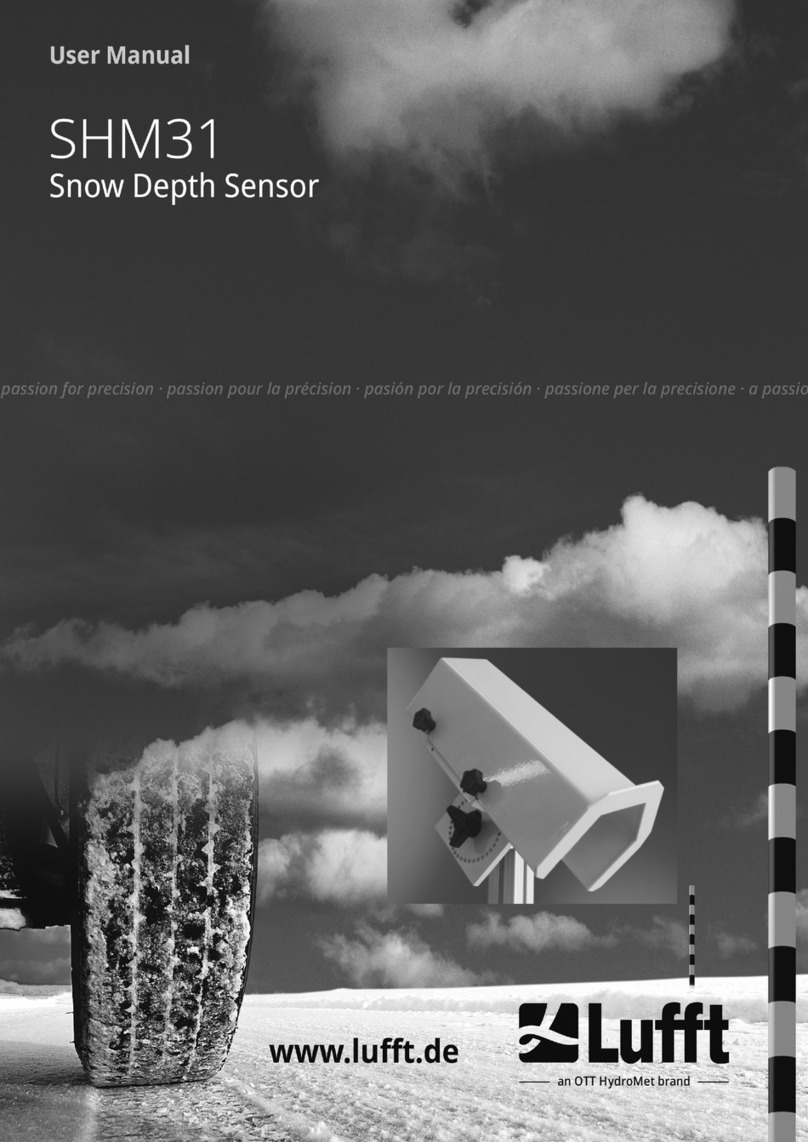
Lufft
Lufft SHM 31 user manual
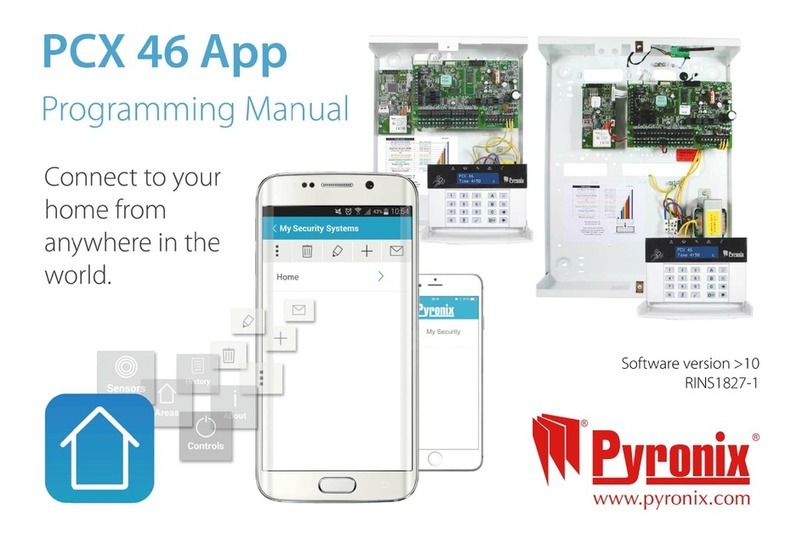
Pyronix
Pyronix PCX 46 APP ASSEMBLY AND PROGRAMMING MANUAL

IFM Electronic
IFM Electronic Efector500 PF2058 operating instructions
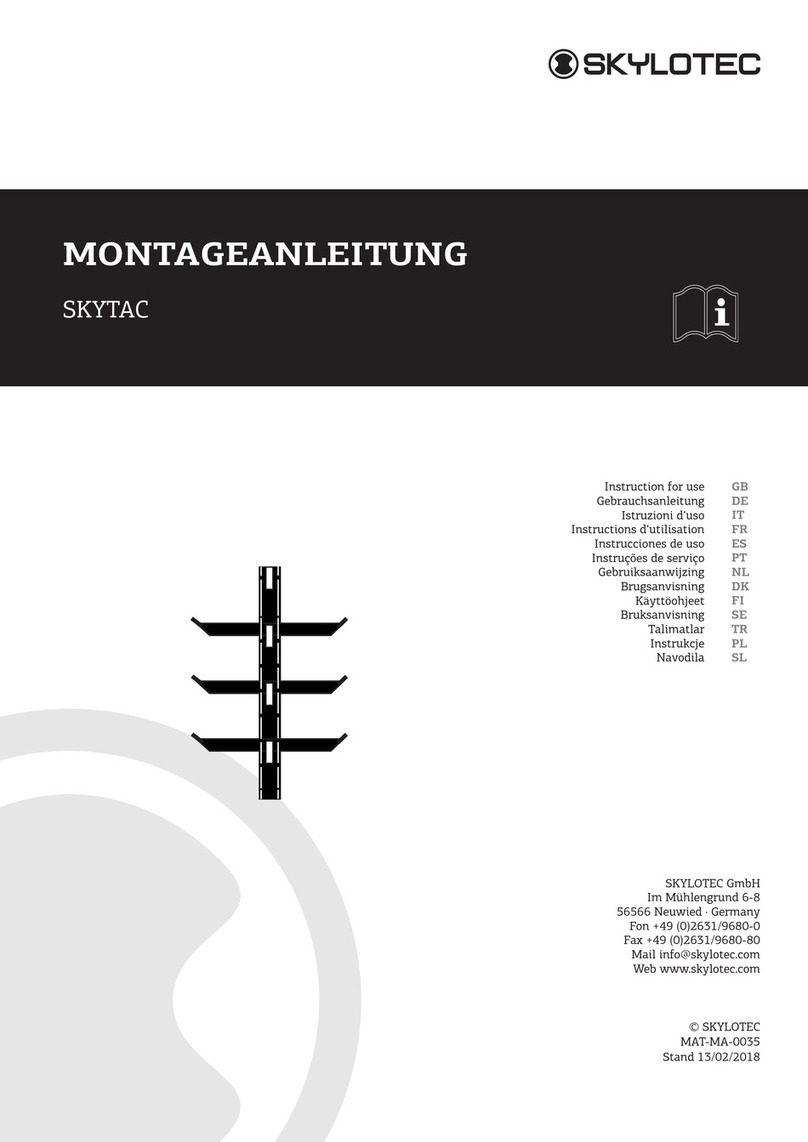
SKYLOTEC
SKYLOTEC Skytac Instructions for use
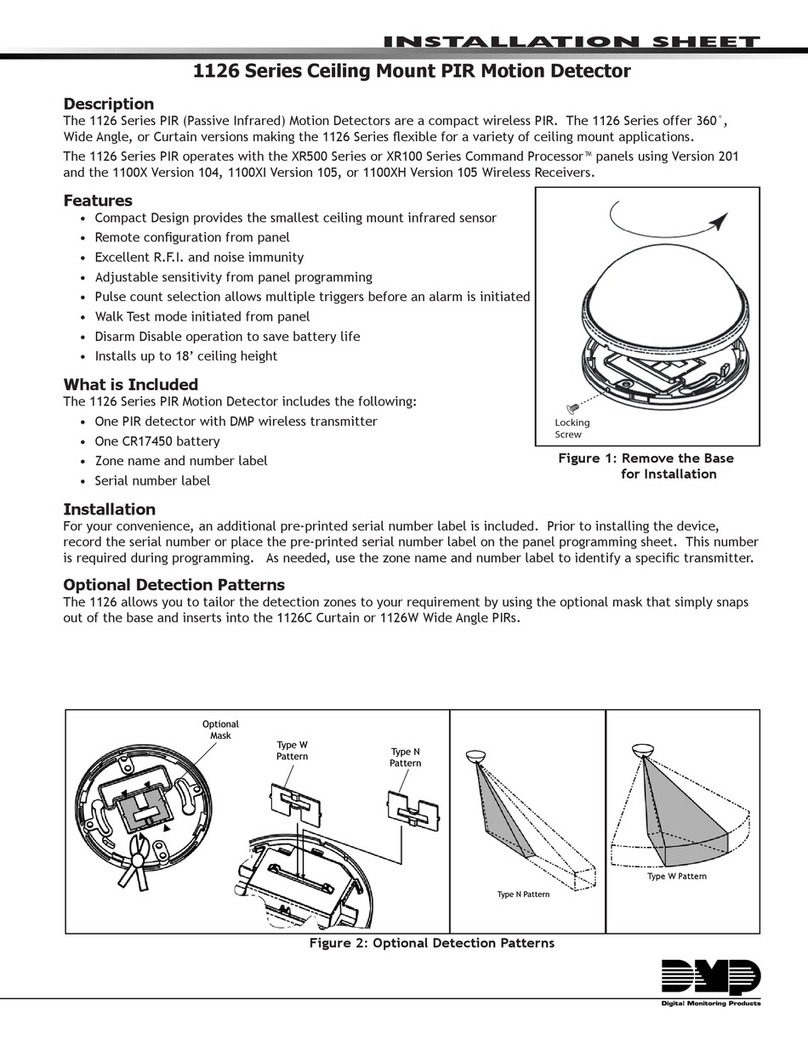
DMP Electronics
DMP Electronics 1126 Series Installation sheet
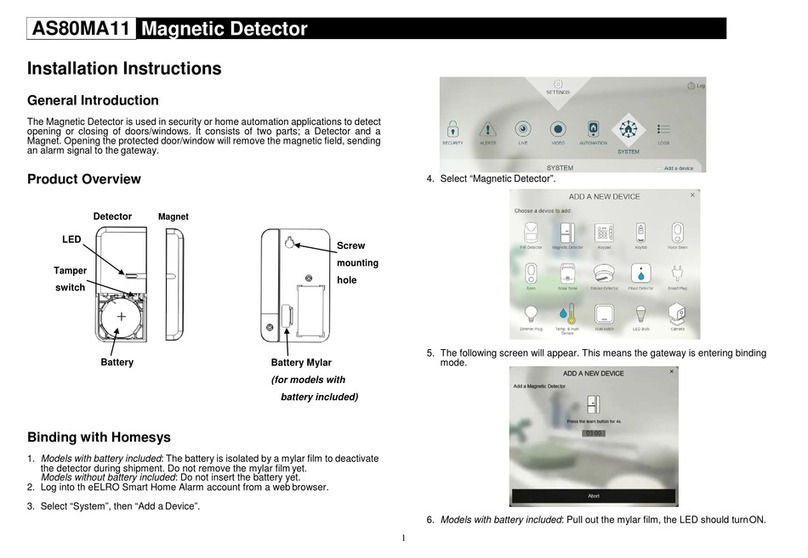
ELRO
ELRO AS80MA11 installation instructions
